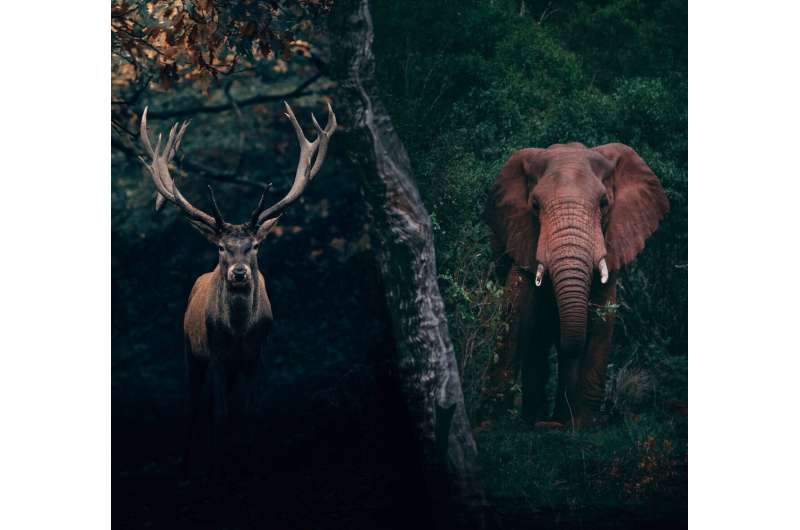Wildlife hunting motivations vary across Africa and Europe

Wildlife hunting motivations and resulting ecological consequences vary depending on the socio-economic context across Africa and Europe, according to a study publishing August 25 in the open access journal PLOS Biology by Mona Bachmann at Max Planck Institute for Evolutionary Anthropology, Leipzig, Germany, and colleagues. Despite these shifts, the intensity of hunting varies less than commonly expected across this North-South context.
Hunting of wildlife is common across the globe and is a major driver of wildlife decline within and outside protected areas. The Global South is typically the focus of studies on hunting and its impacts on wildlife, but hunting may also threaten wildlife in the Global North. However, little is known about differences in socioeconomic and ecological contexts in which hunting takes place across Africa and Europe. Bachmann and colleagues sought to understand the motivations of wildlife hunting and the resulting ecological consequences to aid effective wildlife conservation.
The researchers visited 114 National Parks in 15 African and 10 European countries and interviewed park managers regarding the state of wildlife, as well as about legal and illegal hunting activities within and outside of the protected areas. Using this information, the authors developed statistical models to relate the motivations for hunting and resulting threats to wildlife to the varying socio-economic and ecological contexts.
The researchers found predominantly economic motivations for hunting in the context of low socioeconomic status, as in many African countries. With increasing socio-economic conditions, motivations shifted towards socio-cultural, recreational and ecologically motivated hunting of wildlife. Differing motivations were associated with variation in targeted wildlife species: while illegal hunting frequently threatened large ungulates within and outside of the studied African protected areas, in Europe, large carnivores were often targeted by illegal hunting outside protected areas.
Overall hunting intensity was fairly constant across locations. Additionally, densely populated areas were associated with increased conflict-related killing of wildlife on both continents. Independent of socio-economic context, integration of local communities into wildlife protection efforts and mutual trust-building was seen as effective in reducing illegal hunting.
While the authors interviewed only National Park managers—and not, for example, hunters—the study nonetheless suggests that an understanding of the socioeconomic context of wildlife hunting may be important to inform protection efforts.
Dr. Bachmann adds, "Independent of the various forms of hunting that take place under varying socio-economic contexts, underlying motivations and legal frameworks, our findings highlight that collaborative and integrative efforts in wildlife conservation reduce the threat to wildlife by hunting."
More information: Analysis of differences and commonalities in wildlife hunting across the Africa-Europe South-North gradient, PLoS Biology (2022). DOI: 10.1371/journal.pbio.3001707
Journal information: PLoS Biology
Provided by Public Library of Science




















